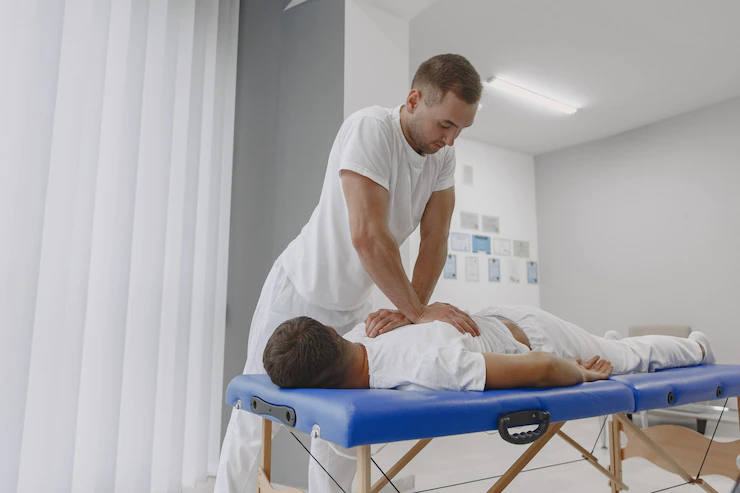Chiropractic treatment is one of the most effective treatments for sciatica, lower back pain and neck pain. You are most likely to have several questions regarding chiropractors if you haven’t had a chiropractic adjustment yet. The chiropractic treatment starts with an initial consultation followed by a thorough physical examination to determine the exact problem. The office settings and intake procedures are similar to other healthcare providers. The chiropractic treatment table, however, is different since it is primarily designed for spinal adjustments. Here is the rest of the information you need before visiting a chiropractor in Calgary.
What happens on your first visit to a chiropractor in Calgary?
Whether you visit a chiropractor in Calgary, Macleod Trail or Shawnessy, the initial visit consists of three phases.
Phase 1- Learning about the patient’s history and symptoms
The chiropractor in Calgary or Milrise first listens to your problems. You need to provide background details about your symptoms and conditions. The questions your chiropractor might ask are:
- Where do you feel the pain?
- When did it start?
- Describe the pain.
- Did the pain happen because of an injury?
- Does it become worse after a certain activity?
Phase 2- The Chiropractic exam
The chiropractor now conducts certain exams to assess:
- Range of motion
- Neurological integrity
- Muscle strength
- Muscle tone
Phase 3- Diagnostic studies
By this time, the chiropractor in Calgary has your history and chiropractic exam results at hand. Diagnostic studies help them identify specific structural abnormalities, thereby diagnosing the condition more accurately.
The chiropractor usually focuses on the spine along with the area of complaint. Let’s say you visit a chiropractor in Fish Creek with a low back complaint. So, the chiropractor may perform a neck exam as well since injury in one area causes irritations somewhere else as well.
How does a Chiropractor in Glenbrook or Calgary Prepare the Treatment Plan?
The chiropractor in Glenbrook/Calgary knows the following after the three above-mentioned phases:
- The extent of your injury
- The condition of your general health
- Your health goals
- The condition of your spine
Some need a chiropractor in Canyon Meadows or Calgary to get rid of pain while others may need it to improve general health. So, the chiropractor comes up with an effective treatment plan based on the above-mentioned information.
Your discussion with your chiropractor is very important. The latter must know everything about your condition and health. Ask as many questions as you want. It is, after all, a matter of good health and well-being.
What is a chiropractic adjustment?
You must have heard of chiropractic adjustment every time you look for information about chiropractors in Somer set or Calgary. Well, chiropractic adjustment is about using controlled leverage, amplitude and force at specific joints. These adjustments are usually directed at the knee, ankle, spine, elbow, wrist and shoulder. That means you should visit a chiropractor in Calgary or Killarney whenever you experience pain in these areas.









 Often referred to as neck sprain whiplash can cause weakness, inability to sleep,backpain, stiffness, and pain around the neck. In most situations, the symptoms of whiplash are not immediatelynoticeable till a few days after, it is important to take cognizance of any symptom to prevent the neck sprain from becoming a long-term pain.
Often referred to as neck sprain whiplash can cause weakness, inability to sleep,backpain, stiffness, and pain around the neck. In most situations, the symptoms of whiplash are not immediatelynoticeable till a few days after, it is important to take cognizance of any symptom to prevent the neck sprain from becoming a long-term pain.

 In addition to the passive method of treatments discussed above, there are otheractive methods that your therapistcan recommend and engage you in if you have whiplash. These methods involvedifferent exercises to improve your motion and enhance your strength. It is necessary to embrace the fact that there is no general physical therapy method for everyone, only your therapist can choose a suitable program for you based on your history and health. Generally, physical therapies are efficient in the treatment of whiplash, utilizing them would help your neck heal in no time.
In addition to the passive method of treatments discussed above, there are otheractive methods that your therapistcan recommend and engage you in if you have whiplash. These methods involvedifferent exercises to improve your motion and enhance your strength. It is necessary to embrace the fact that there is no general physical therapy method for everyone, only your therapist can choose a suitable program for you based on your history and health. Generally, physical therapies are efficient in the treatment of whiplash, utilizing them would help your neck heal in no time.
